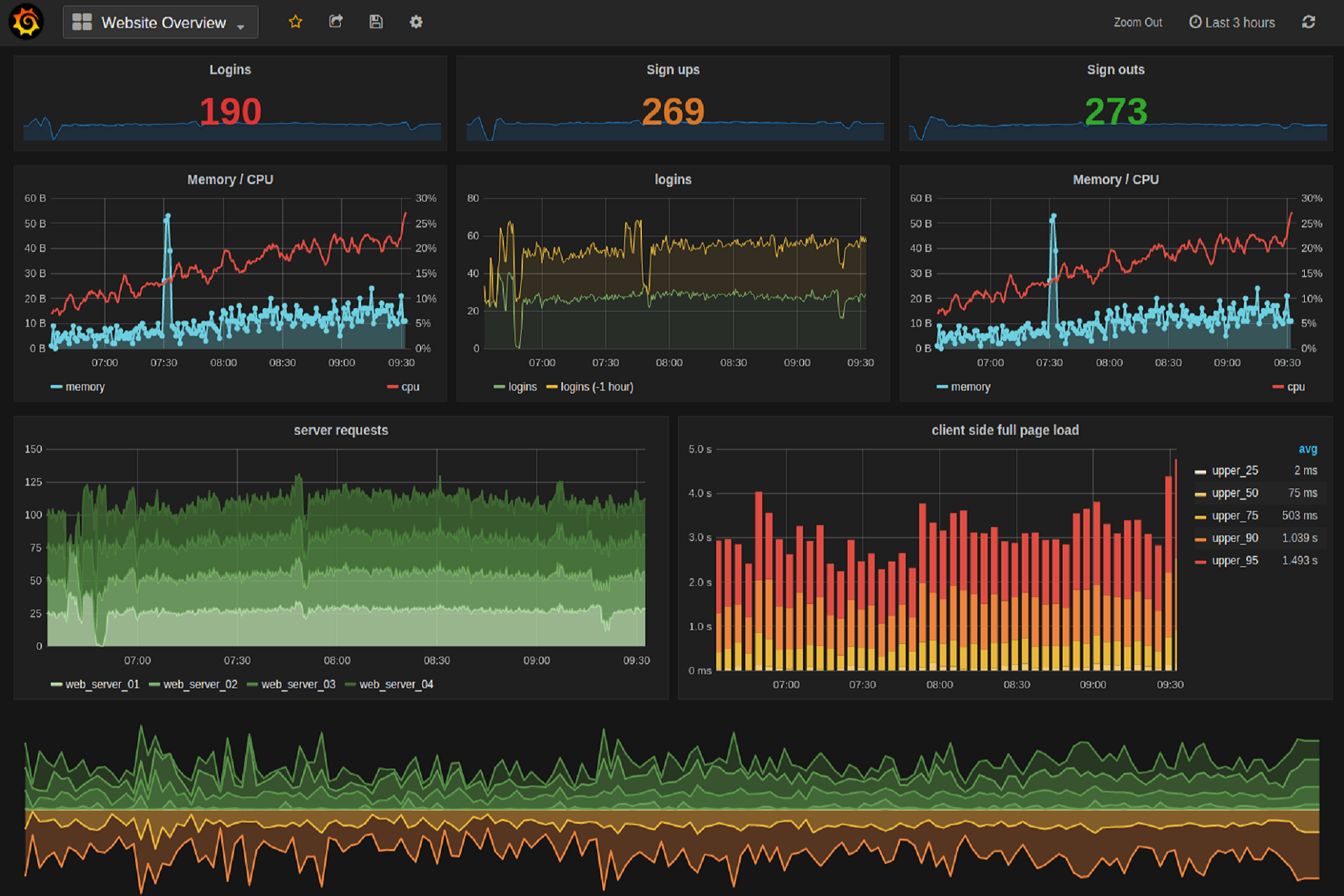
Management and classification of stops and microstops
February 13, 2020
Monitoring your factory: a practical example
May 18, 2020

Monitoring, an ally in times of war
What is monitoring?
Monitoring is the observation and measurement of one or more parameters over time. Its objective is to identify the existence of abnormal events or potential problem situations that need to be evaluated or intervened upon. Generally, it means being aware of the state in which a system, a population, a machine, etc. is, observing the changes that occur over time in it, by including a probe or monitor that measures these changes.In this regard, monitoring allows us to know at all times the state of the elements to be observed and to be able to make decisions based on the information it provides us with.

Advantages of monitoring
How does having a monitoring system help us?Being aware in real time of the changes that occur in the critical elements of our business, gives us in itself a competitive advantage over companies and businesses that do not have such a system. In a very summarized and general way we can list the following points as the main advantages of a monitoring system:
- Real-time data collection from any source, be it IT or Telecommunications, an industrial machine, IoT or IIoT system, or business (BI).
- Correlation and analysis of the collected information. Having all the data unified in a single tool or datalake, allows us to easily process and correlate them. This helps us to get much more out of the data and information.
- Simple and simplified visualization of relevant information in dashboards. A simple visualization allows us to identify the focus of the problem in a direct way and focus efforts on its quick resolution, without wasting time. The data can be visualized on any equipment, PC, Tablet, smartphone, smartwatch, or even through augmented reality techniques.
- Intelligent alarming from the collected data. We can receive intelligent alarms, through text messages, SMS, Email, Chats or even by call simply with the information that interests us and provides value.

Good practices in monitoring. Advantages of using a SaaS monitoring system in the cloud
Among the many possibilities offered by a monitoring system is that of having it in the cloud in SaaS mode. The most obvious advantage is to have a monitoring system outside our organization and our network. For a similar reason, and because external providers also fail, it might be best to adopt a hybrid solution, in which we are able to have external and internal probes (per site or network segment) reporting in real time to our centralised system in the cloud, but there are more advantages:- It is cheaper, since it mainly saves costs of hardware, maintenance and specific personnel.
- It is faster, since SaaS services, oriented to good practices, work with optimized templates and pre-configured dashboards for immediate application in the company.
- High availability. By design, a SaaS monitoring system eliminates the dependence on connectivity of each of the multiple sites or locations we may have, or the need to implement high availability strategies between multiple DPCs with systems that, like monitoring, consume bandwidth and storage.
- It is not necessary to be an expert in monitoring. Today the cloud is an economical way to buy knowledge and dedication to specific technologies.
- Possibility of access from anywhere in the world, at any time.
Are there any disadvantages?
Like any system, cloud monitoring has some disadvantages that should also be mentioned:
- Special requirements of our system or application that are not met by any SaaS tool and must be contracted separately or developed ad-hoc which increases the costs of the solution.
- Availability of Internet connection. Nowadays, if there is no Internet access in your offices, the problem is much more serious than being left unmonitored, with the aggravating factor that if your system is in the office and does not have Internet access, it will not be able to warn you of this problem.
- Depends on the availability of the provider. Obviously, the provider must offer some service SLAs and even then, Amazon or Azure can fall, but surely the availability will be greater than on-premise and when there are problems you will not have to fix them yourself...
In the next post, you will find many more details of the advantages of using a cloud monitoring system, external to an organization:
https://www.muutech.com/en/advantages-of-using-a-saas-cloud-monitoring-system/
Examples of monitoring cases
Monitoring can be used in any field, industry or situation. For example, in these days of recession and confinement due to the Coronavirus or covid-19 as it is known, all governments worldwide, without exception, are starting to monitor their population, confirmed cases, deaths and medical discharges. Thanks to this population monitoring, many data, graphs and statistics are obtained and regularly exploited by the governments of the countries to take action to reduce and stabilize the cases of infection and thus reduce the risk and keep safe as many people as possible, especially those groups at risk.
(coronavirus infected monitoring 22.03.2020. Source www.elpais.com)
Following this analogy, the same thing happens in companies, whatever type or sector they are:
In an industrial company that manufactures consumer goods, the critical elements may be certain machines or processes that will need to be regularly monitored or controlled in order to know their state of production, consumption, efficiency, etc. Thanks to this, it is possible to plan the production or maintenance of them to minimize as much as possible the impact of an unplanned production stop, which could cost thousands of euros to the company, even impacting indirectly on the supply chain, and finally, the final customer.
In an industrial company that manufactures consumer goods, the critical elements may be certain machines or processes that will need to be regularly monitored or controlled in order to know their state of production, consumption, efficiency, etc. Thanks to this, it is possible to plan the production or maintenance of them to minimize as much as possible the impact of an unplanned production stop, which could cost thousands of euros to the company, even impacting indirectly on the supply chain, and finally, the final customer.

In a company that provides IT or Telecommunications services, the critical elements to monitor, in this case, could be its servers, databases, applications, cloud service, etc. Having control over them will allow the company to offer continuous activity without service interruptions or downtime, which will increase customer satisfaction and, in turn, decrease the associated costs per service interruption.

Adapting to the needs and environment
In a changing environment such as the one we live in, and independent of the activity carried out by the company, monitoring is undoubted of fundamental importance. The flexibility that a monitoring system provides us when it comes to anticipating problems and eventualities gives us a competitive advantage that we must take advantage of.It is in our hands to adopt and make use of the current technologies offered by companies like Muutech, which are available and allow, on the one hand, to optimize processes and reduce costs associated with process and production or business systems stops, and on the other hand, to sleep peacefully knowing that we have all our critical systems and processes under control. Good monitoring!

DEVELOPMENT AND DIGITALIZATION MANAGER
Expert in industrial monitoring and IT monitoring.
We help companies fight against stoppages and degradation of IT systems and industrial processes.
Transform your monitoring data into valuable information, anytime, anywhere
Improve the efficiency and decision-making of your company!
Subscribe to our Newsletter




